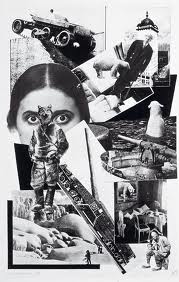1) Who said “ The camera gave me the license to strip
away what you want people to know about you, to reveal what you can’t help
people knowing about you”, and when was it said?
Above sentence was said by
Diane Arbus in the early 60s. She was an American photographer who believed
that the camera had the ability to steal other peoples faces and life. By
taking pictures she tried, in her own words ‘’be good’’. She badly wanted to be
someone else and by her images she identified herself with the photographed
person.
2) Do photographers tend to prey on
vulnerable people?
Photographers have always looked for marginalised subjects
to photograph. It is a big controversy in recent years whether or not
photographers tend to prey on vulnerable people. For example people who are
exposed socially, economically or culturally in some way. For me question is
whether the photographer feels compassion for his subject or is simply driven
by his hungry eye... Personally as much as a photographer can feel sorry for a
subject, he always wants to create a piece of art, an image with a meaning,
document a history and capture life. Sometimes it means to take advantage of a
poor situation and to draw attention to other people. On the other hand that
can work in favour for the photographed subject and resolve misfortune.
3) Who is Colin Wood?
Colin Wood is a 7 years
old (skinny) boy who’s photograph was taken in 1962 in Central Park, NY by
Diane Arbus. The photo is funny but also tragic because a boy holds a grenade
in his hand.
4) Why do you think Diane Arbus committed suicide?
Diane’s work is all
about her, is a reflection of herself in her photographs. It looks that she
wanted to be anybody but herself. The level of empathy which is so rare in any
art because she so desperately didn’t want to be herself. Personally I think we
would never find out why she took her own life in 1971.
5) Why and how did Larry Clark shoot “Tulsa”?
Larry Clark was taking
photos of his own life, a life of hanging out with friends, taking drugs,
getting lay with a neighbourhood. He was an insider which made his work more
authentic. He photographed the part of America that no one was bothered to see.
A piece of photojournalism. In his hands photography became as personal and
confidential as written diary because he was one of them not one of us.
6) Try to explain the concept of “confessional
photography”, and what is the “impolite genre”?
The ‘’confessional
photography’’ is the genre of photography which tells the story about our own
life and experience. It is like personal diary which shows different aspect of a
journey. Larry Clark opened this new “impolite genre”, photos were profound and
porn. It is rather impolite, more intimate and clearly shows this nasty things
that nobody wants to know about it.
7) What will Araki not photograph, and why?
Araki is Japanese
photographer and contemporary artist who captures daily life. There is nothing
Araki would photograph. Having all the photos helps him to remember. He doesn’t
shoot what he doesn’t want to remember only things are worth remembering.
8) What is the premise of Postmodernism?
Postmodernism is taking
place now. We are living in a culture so saturated with media imagery and media
models of how people live that our life is made of media myth. People are
influenced by media start to lose the own identity. It has affected portrait
photography in the studio as people create themselves for someone they aren’t.





















